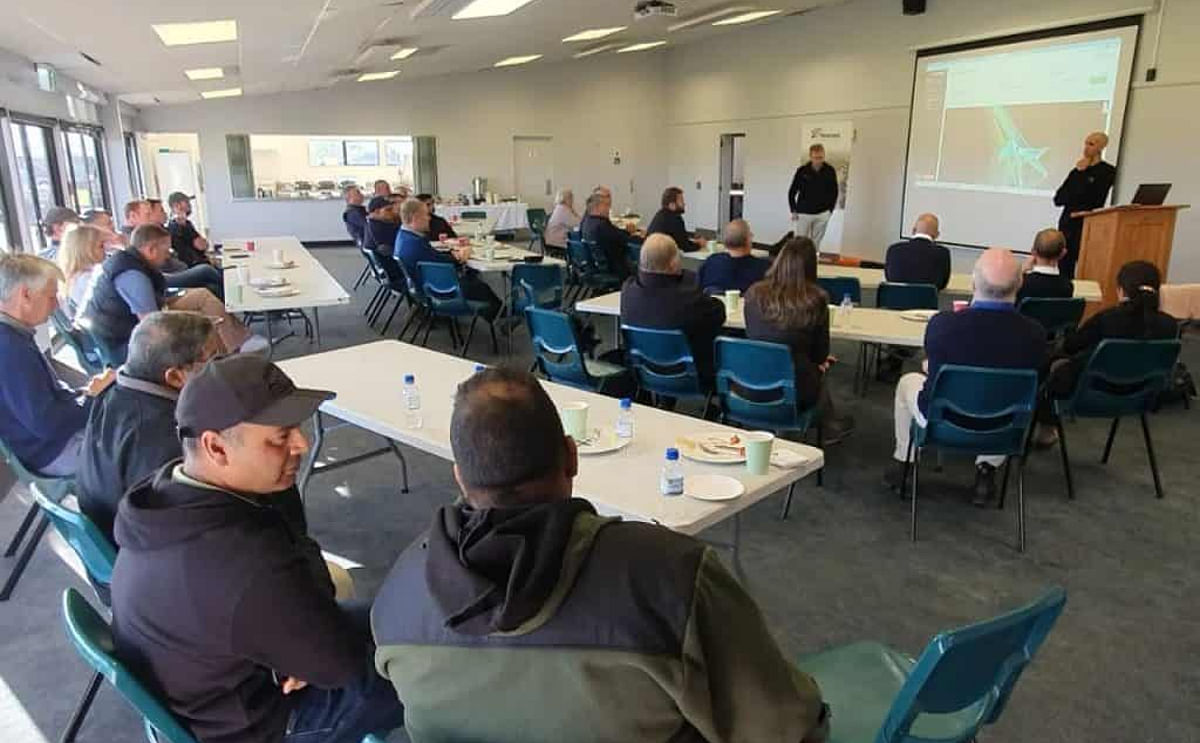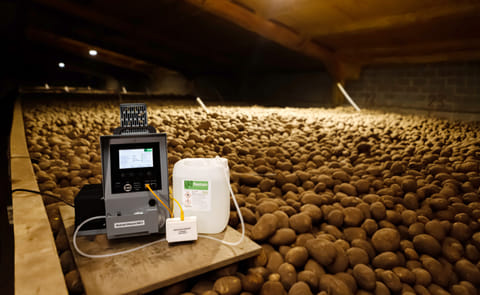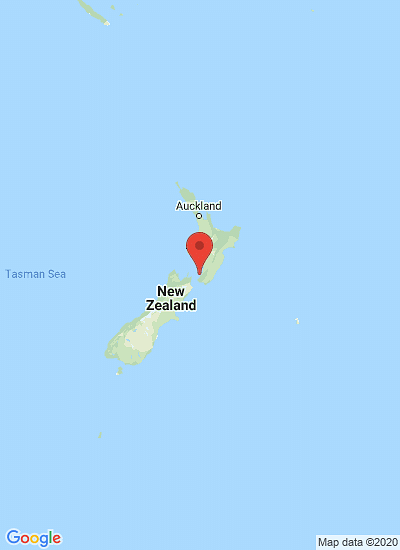Big savings in reducing insecticide use.
Potatoes New Zealand meeting on the benefits of IPM: Big savings by reducing insecticide use.

By adopting integrated pest management (IPM) practices growers are not on their own, Australian entomologist, Dr Paul Horne, told Pukekohe potato growers at a Potatoes New Zealand research update breakfast meeting in late March.
He said he could give examples in his home country of hundreds of growers who had adopted IPM practices. Not only had they done that but had taken it further, reducing sprays for potato moth from 10 to seven.
Paul Horne:
Based in Victoria, most of the work of his company, IPM Technologies, is in reducing insecticide use by showing growers and their advisers the impact of chemicals on beneficial species.
He and colleague, Jessica Page, who have worked on IPM strategies and training for over 25 years across a range of crops in Australia, are now developing an IPM strategy for tomato potato pysllid (TPP) both there and in this country.
For many crops there were only three control agents; pesticides, management practices and biological control.
Paul Horne:
Paul Horne:
Pests were similar in New Zealand with the main problems for potatoes being potato tuber moth (PTM), which could cause significant damage where there was no cool storage on or offshore. Beneficial insects could be used such as parasitic wasps and damsel bugs, which were more important across the Tasman. As well damsel bugs and brown lacewing could be used on TPP as well as aphids, thrips and caterpillars.
There were predatory thrips as well as pest thrips and a parasitic wasp which stung PTM had been introduced over 50 years ago. There were now three of these wasps established in Australia, compared with just one in New Zealand.
Paul Horne:
Paul Horne:
Paul Horne:
Paul Horne:
Paul Horne:
Paul Horne:
Paul Horne:
He said he could give examples in his home country of hundreds of growers who had adopted IPM practices. Not only had they done that but had taken it further, reducing sprays for potato moth from 10 to seven.
Paul Horne:
"That’s not far-fetched – it’s basic biology. If you’re prepared to put in the effort you can do the same, I’m absolutely certain."One grower of 20 years standing through adopting IPM was now using less chemical over his whole growing operation than he had previously used on just one crop. It works, he said.
Based in Victoria, most of the work of his company, IPM Technologies, is in reducing insecticide use by showing growers and their advisers the impact of chemicals on beneficial species.
He and colleague, Jessica Page, who have worked on IPM strategies and training for over 25 years across a range of crops in Australia, are now developing an IPM strategy for tomato potato pysllid (TPP) both there and in this country.
For many crops there were only three control agents; pesticides, management practices and biological control.
Paul Horne:
"There’s nothing else. That’s what you’ve got to look at."An IPM system was never static and would change over time. Growers could try to add on as many options as they could to build into their strategy.
Paul Horne:
"People ring us when there’s a crisis, when pesticides don’t work."Brassica crops were going through this scenario in Australia at present after some pesticides were withdrawn, and export restrictions were enacted because of growers spraying the wrong chemical.
Pests were similar in New Zealand with the main problems for potatoes being potato tuber moth (PTM), which could cause significant damage where there was no cool storage on or offshore. Beneficial insects could be used such as parasitic wasps and damsel bugs, which were more important across the Tasman. As well damsel bugs and brown lacewing could be used on TPP as well as aphids, thrips and caterpillars.
There were predatory thrips as well as pest thrips and a parasitic wasp which stung PTM had been introduced over 50 years ago. There were now three of these wasps established in Australia, compared with just one in New Zealand.
Paul Horne:
"A big advantage was that PTM caterpillars could be pulled apart in the field to find the wasp maggots, instead of needing to be bred up in a laboratory “and then telling the grower they should have sprayed three weeks ago."Another parasitic wasp of lepidoptera which wasn’t present in this country, copidosma, was polyembryonic, meaning it could divide and produce 50 wasps. Cultural controls were equally or possibly more important, he said.
Paul Horne:
"I’m not telling you anything you don’t already know."Soil management, rolling, variety selection and irrigation all helped maintain soil structure. As the crop died down moths laid their eggs on the soil and caterpillars could go down the small soil cracks to find potato tubers.
Paul Horne:
"So your soil cover needs to be good, because it doesn’t take much soil to stop them going down."Controlling weeds such as fat hen could get rid of thrips and self-sown potatoes could be a big problem.
Paul Horne:
"Use chemicals only as a supporting tool."They should consider the impact that spraying could have on beneficials, choosing them on the basis of the insects they wanted to look after.
Paul Horne:
"You might choose a soft chemical, rather than blasting everything away. And if you choose the wrong product you can make things worse."In one case he was involved in an Australian grower who used few pesticides but sprayed fungicides every few weeks mistakenly applied Axe, a broad spectrum insecticide instead of the fungicide, Miravis Ace.
Paul Horne:
"Early on he smelt it but by the time he called application off half the paddock had been sprayed."When Horne later monitored the paddock every leaf he turned over had aphids present, an exponential increase of the incorrect spray application had killed off the ladybirds and lacewings which would usually take out the aphid population.
Paul Horne:
"Fortunately there was no virus present but if there had been it would have been rampant."Many pesticides were safe with biologicals which meant a strategy had now been built up with many control options.
Like to receive news like this by email? Join and Subscribe!
Get the latest potato industry news straight to your WhatsApp. Join the PotatoPro WhatsApp Community!
Highlighted Company
Sponsored Content
Sponsored Content
Sponsored Content
Sponsored Content








